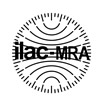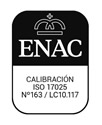In recent decades, the construction of homes with a focus on energy efficiency and occupant comfort has become a priority. One of the most innovative solutions in this respect has been the Passivhaus standard, which focuses not only on energy efficiency but also on creating a healthy indoor environment.
How can indoor air quality be monitored in a Passive House?
As we know, indoor air quality has a direct impact on the health and well-being of the occupants, as it can prevent problems such as allergies, asthma and other respiratory problems; for this reason, and due to the high airtightness of Passive Houses, monitoring indoor air quality is crucial.
Unlike traditional buildings, where natural ventilation plays a very important role, Passivhaus buildings rely almost exclusively on mechanical ventilation systems to maintain adequate air quality.
The ventilation system used – Heat Recovery Ventilation System (HRVS) – is fundamental to maintaining a healthy environment: it not only ventilates the space, but is also responsible for maintaining a comfortable indoor temperature without excessive energy consumption, extracting stale air from the interior spaces, recovering the heat from this air and using it to heat the fresh air entering the house.
Studies have shown that these systems promote better indoor air quality in Passive Houses than in conventional homes. However, while this continuous ventilation is essential to ensure good air quality, it can also be counterproductive if not properly controlled.
Indoor air quality depends to a large extent on the behaviour of the occupants, and many homes contain sources of pollutants such as cooking, cleaning products, tobacco smoke, etc. that increase indoor air pollution.

As many air pollutants such as particulate matter (PM), volatile organic compounds (VOCs) and gases such as carbon dioxide (CO2) are imperceptible to the human senses, indoor air quality can be adversely affected without real-time controls to monitor their levels and optimise mechanical ventilation.
The importance of real-time monitoring of air quality in Passive Houses
Real-time monitoring of air quality can be a very powerful addition in Passive Houses, as it allows the optimisation and improvement of the performance of the heat recovery ventilation systems.
By operating intelligently and based on the data collected by the air quality monitors, the HRVS system can reduce its energy consumption by increasing or decreasing ventilation only when necessary, based on real-time data, thus avoiding over-operation and saving energy.
Another feature of these devices is that they can send alerts to occupants when they detect indoor air conditions that are harmful to health (such as high levels of CO2 or particulate matter), allowing the source of the pollution to be identified and mitigated, which is particularly important in homes with vulnerable people such as children, the elderly or those with respiratory problems.
They also add value by providing early warning of the need for preventive maintenance of the ventilation system, since over time the system’s filters can become clogged or suffer direct system failure, so air quality monitoring helps to ensure optimal operation and extend the life of the system by allowing historical data to be compared and anomalies to be detected.

In addition, these IoT devices can generate detailed reports on air quality and HRVS performance, providing Passivhaus homeowners with valuable information to make adjustments and improve efficiency.
What is Passivhaus certification?
Passivhaus is a building standard that originated in Germany in the 1990s and has become a global benchmark for energy-efficient construction.
The main principle of Passivhaus buildings is a design that maintains optimal comfort conditions inside the house with minimum energy consumption, thus achieving a reduction in energy consumption of up to 90% compared to traditional constructions.
To achieve this, this type of construction uses “airtightness” as the main tool to maintain energy efficiency and improve indoor air quality.
This airtightness is achieved by providing exceptional thermal insulation through the construction of a continuous thermal envelope without thermal bridges to maintain a stable indoor temperature and prevent condensation and mould growth.
However, this feature poses a challenge in terms of air quality, since limiting the air infiltration from the outside can lead to an accumulation of indoor pollutants such as carbon dioxide (CO2), volatile organic compounds (VOCs) and fine particulate matter (PM2.5), a problem that can be completely solved by using an indoor air quality monitor such as Nanoenvi IAQ, which monitors these parameters in real time.











